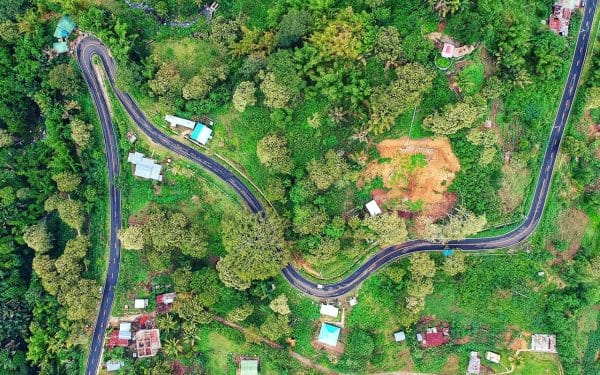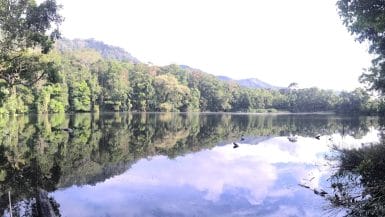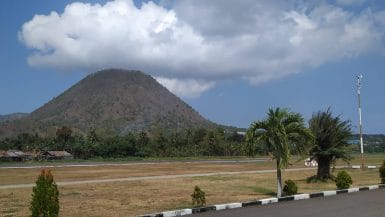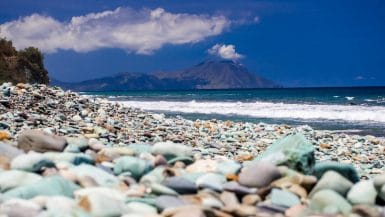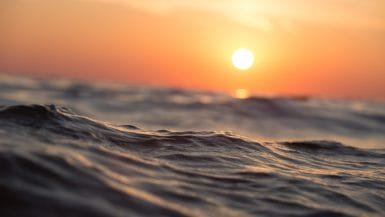As well as presenting cultural and historical diversity, tourism in Ende offers stunning natural beauty. A prime example is the Moni Village.
About Moni Village
Moni is a small village located about 47 kilometers from Ende, the capital city. The exact location is Ende, Flores, East Nusa Tenggara, Indonesia. Generally, tourists visit here while visiting Mount Kelimutu.
In addition to its beautiful natural scenery, Moni has several bustling traditional markets. In these markets, bartering is still the primary way to transact. Aside from that, there are also Ikat weaving souvenirs and traditional dances.
How to get to moni?
From Kupang, you can travel to Moni via Denpasar or Jakarta. Upon arrival in Kupang, you will fly again to Maumere, then take a bus to Ende.
Getting from Maumere to Moni will take about 2.5 to 3 hours. There are many public transportation options available. As an alternative, tourists can also drive to Moni from Ende City, which will take about 1,5 – 2 hours.
Getting to Moni from Maumere requires a travel time of about 3 hours while getting there from Ende requires a travel time of about 2 hours.
Accommodations
Most tourists will spend the night in Moni before visiting Kelimutu Lake, within Kelimutu National Park (TNK). There are many lodging options in Moni, ranging from affordable to expensive.
In Moni, many locals offer lodging for tourists. Depending on the facilities obtained, the prices range from 150,000 rupiahs to one million rupiahs.
Also, ask the innkeeper about transportation to Mount Kelimutu National Park. The innkeeper usually works with the taxi service when renting cars, motorbikes, or motorcycles.
Attractions in Moni
As a natural tourist destination, the main highlight is the scenery. In Moni, you can see lush hazelnut trees (Aleurites moluccana) and cool air, making the scenery look beautiful and green.
Furthermore, you can admire the hills that surround the village, as well as a terraced rice field. Also, you should not miss the coolness of the Moni waterfall and the beauty of the sunset from Mount Kelimutu.
The point to note is that it’s a good idea not to go anywhere without a local guide. A few parts of this national park are inaccessible due to geothermal instability.
Moni Waterfall
As well as serving as a stopping point for tourists visiting Maumere and Labuan Bajo, the village has a refreshing waterfall. The waterfall is not far from the inn. You can walk there in five minutes.
Despite the dry season, this waterfall had a reasonably heavy water flow. Swimming or playing in the water is possible in the natural pool below the waterfall.
Kelimutu Lake
Lake Kelimutu is one of the highlights of Flores. Located in Mount Kelimutu National Park, Moni Village is about 15 kilometers away by motorized vehicle, which takes 30 minutes. You can also rent a motorbike from residents.
The watercolor on this lake can change at any time. In Kelimutu, locals believe that the dead rest in the lake. Some plants are rarely found in other parts of Flores around Kelimutu.
Kelimutu Mountain
A must-see destination besides the lake is the sunrise on Mount Kelimutu. The best time to start the journey from Moni to Kelimutu is at 03:30 to catch a glimpse of the beautiful sunrise.
As you climb, you will see beautiful pine trees and the sunrise in the background. There are also ferns, Casuarina plants, redwood trees, and edelweiss flowers.
You must purchase an entrance ticket in advance to enter Kelimutu National Park. The entrance fee for Indonesians is 20 thousand rupiahs. Meanwhile, foreign tourists have to pay 150 thousand rupiahs.
Village rituals in Moni
Besides the beautiful natural scenery that Moni has to offer, you can also witness the ritual events carried out by its residents every month. Tu Tau, a harvest ritual performed in October, January, or February, is one of the traditional Lio rituals still practiced today.
There is also Nai Keu, or Coconut Picking around February (especially between March, June, September, and December for coconut harvesting). Also, there are the Gaga Jala rituals, the street cleaning rituals, Wari Pare, and the rice drying rituals in April and May.
Around September or October, there is also the Wa’u Tosa or rice milling ritual. Around October, there is also Nggera Kibi, a ritual for cleaning rice barns.
In conclusion, if you want to experience a clear and beautiful sunrise with pine trees around you, Moni Village would make an ideal place to visit.

